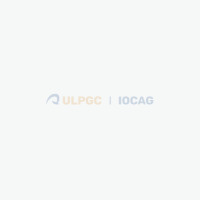QUIMA
Is a marine chemistry group working on CO2 system, acidification and trace metal chemistry in the ocean through in situ sampling, time-series, and volunteer shipping opportunities as well as laboratory experiments.

What we do
The QUIMA research group comprises two distinct yet interrelated lines of investigation: Carbon Dioxide and Climate Change, and the physico-chemical processes of trace metals in the marine environment.
Led by Dr. Melchor González-Dávila, the first research line focuses on investigating the CO2 system and its impacts on climate change and global warming across the oceans. This is achieved through oceanographic campaigns, fixed observation stations (time-series), and volunteer observation ships (VOS). Among them, ESTOC and the CARBOCAN network are highlighted. The group works with oceanographic buoys and VOS lines covering the Canary Islands and the Mediterranean Sea. Moreover, one of the VOS lines is currently accredited in the ICOS program.
In the second research line, led by Dr. J. Magdalena Santana-Casiano, investigations are focused on the trace metal chemistry, covering the kinetic processes of oxidation and reduction of trace metals, particularly iron and copper. This research also delves into their interaction with organic compounds and their characterization in the ocean. Additionally, the incorporation and assimilation of trace metals by various particulate materials, especially phytoplankton cells, are examined along with their effects and chemical behavior.
These two lines of research are interconnected as atmospheric CO2 is causing a decrease in ocean pH and carbonate ion content, known as ocean acidification, which affects metal chemistry and their biogeochemical cycles. As a result of these investigations, the QUIMA group has become part of international programs such as ICOS, GOA-ON, and GEOTRACES.
People
Who we are
Publications
- Copper toxicity leads to accumulation of free amino acids and polyphenols in Phaeodactylum tricornutum diatoms
- Copper toxicity leads to accumulation of free amino acids and polyphenols in Phaeodactylum tricornutum diatoms
- Copper toxicity leads to accumulation of free amino acids and polyphenols in Phaeodactylum tricornutum diatoms
